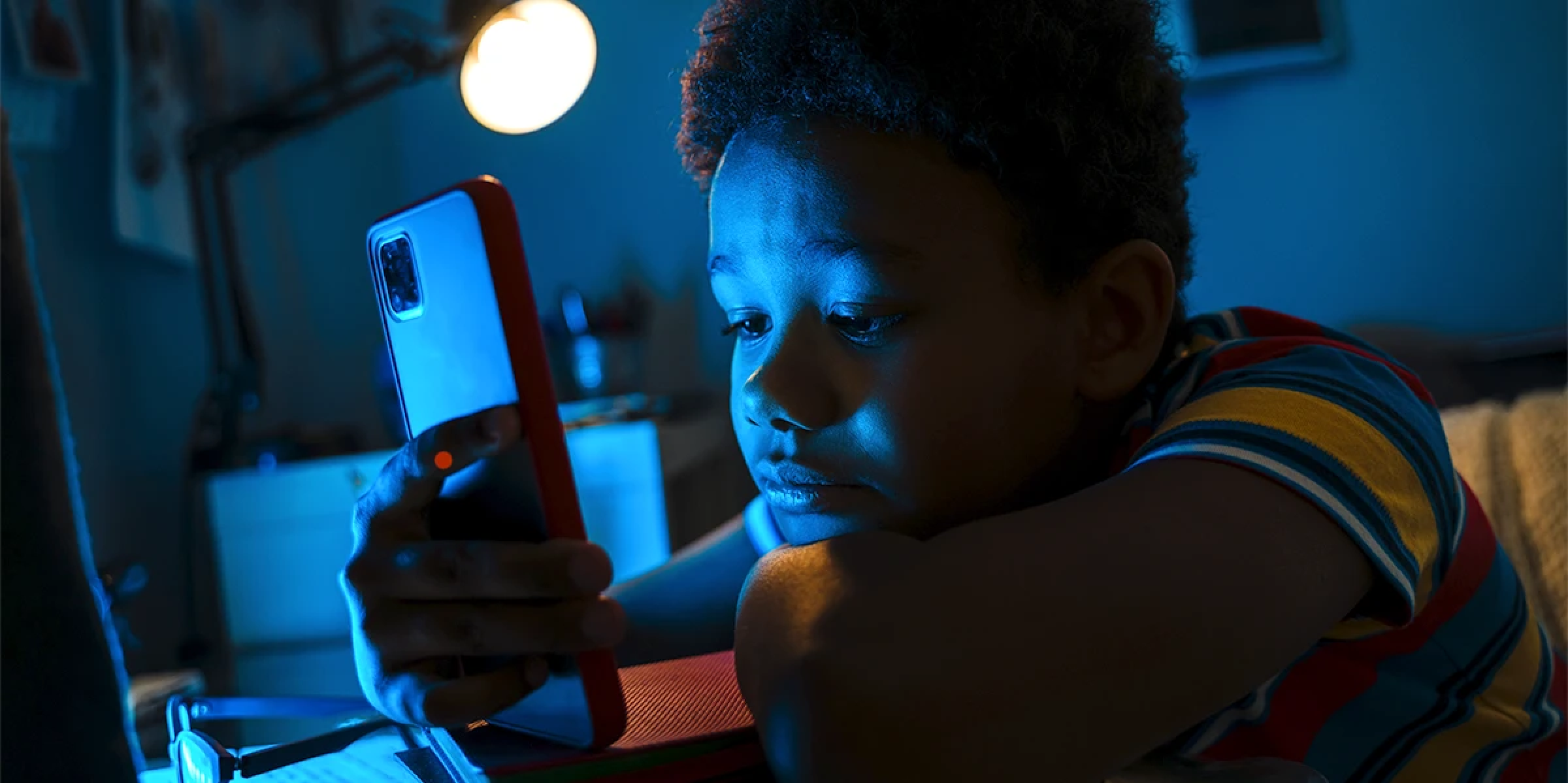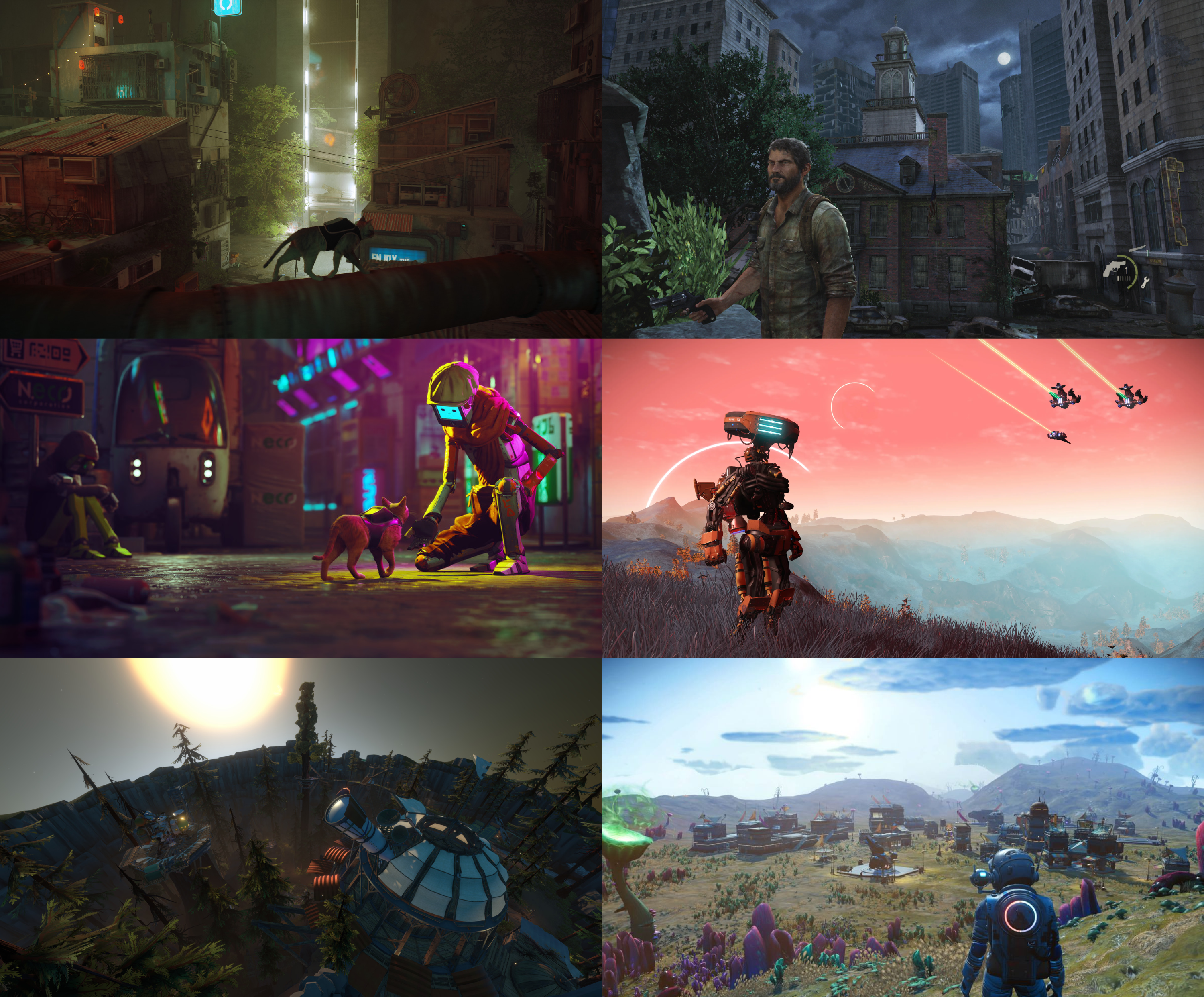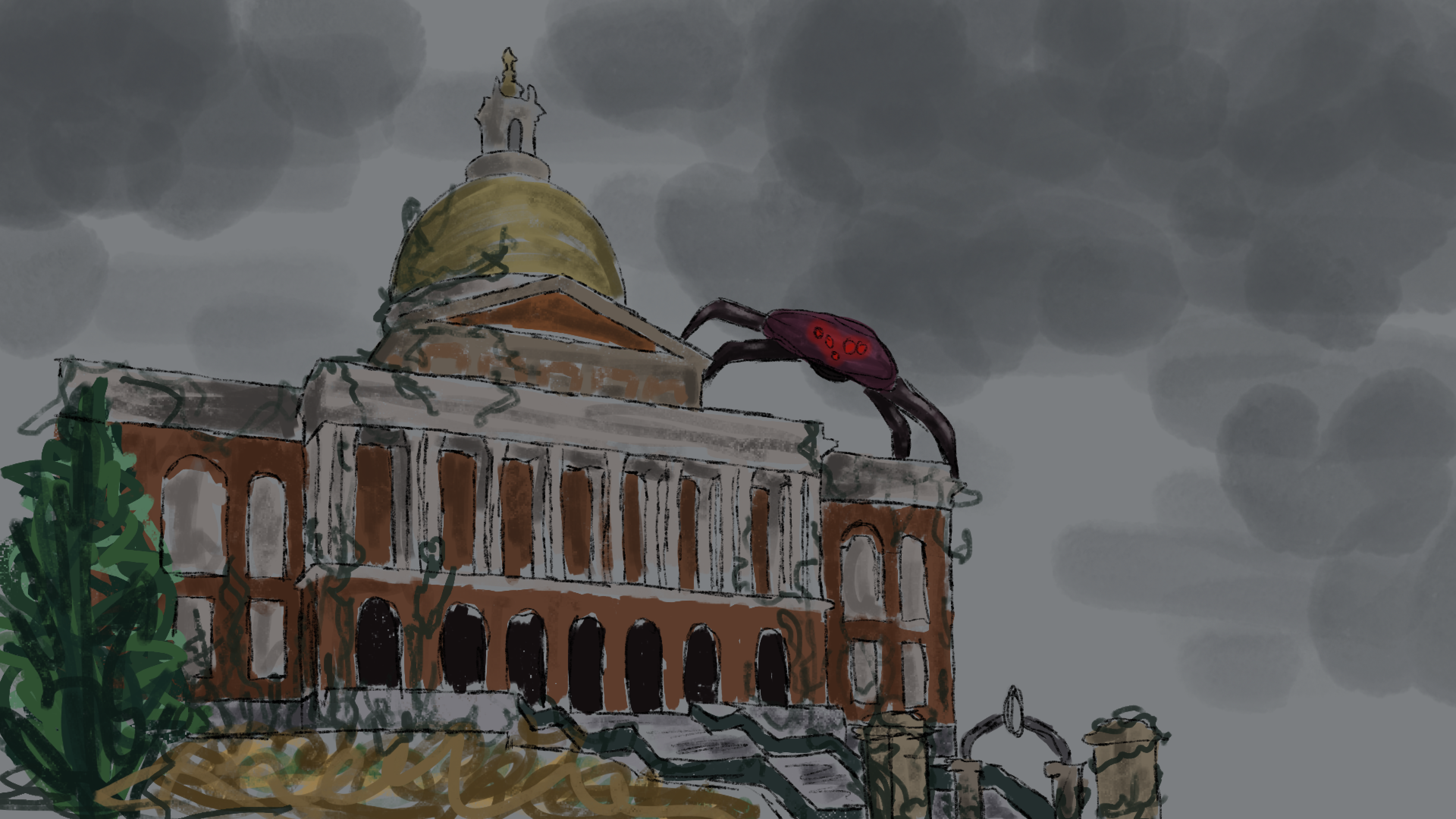Informal Learning for Children - Algorealm
Time: January 2024
Role: Game designer, Storyteller in team of five
Tools: Figma

SUMMARY
This project is part of Harvard's HT123 2 week January term course for Informal Learning for Children in the Education School. Today's young people grow up in a media-saturated environment, and this course addresses ways for children to interact with it in a healthy way. This course dived into the success of Sesame Street, with several guest speakers from the platform in research, creative talent, and global impact. Our project topic focused on digital literacy, where we chose to address the algorithms controlling social media and exposing children to innapropriate and harmful content. The form of this project is an interactive video game for adolescents to learn about the algorithm, how it can cause harm through things like doom-scrolling, and how to teach this digital literacy to other. The game setting is a dystopian form of Boston, where the citizens have direct negative effects from being glued to their social media in an unhealthy way. The hope is that, after playing this game, children practice what they learned in real life and have better autonomy around what an algorithm actually is and how it works.
PROBLEM
Algorithms drive excessive social media use, with kids and teens being more vulnerable to excessive doom scrolling (1).
Children are being given smartphones at younger and younger ages, with free reign over the use of it, with 95% of youth ages 13-17 reporting use of a social media platform, and 40% ages 8-12 (2).
It has been found that “adolescents who use social media more than three hours per day face twice the risk of experiencing poor mental health outcomes,” which is an easy target hit by most (3).
There are little to no regulations in place for determining what content a user should see, especially a child.


RESEARCH
Overconsumption is prevalent on social media, and adolescents can be vulnerable to it.
More specifically, adolescents of lower-income backgrounds are more likely to report addictive behaviors with social media (4).
The unrestricted exposure of adolescents to unregulated content, coupled with the addictive nature of these platforms, is not only exacerbating mental health issues but also stifling their innate curiosity and ability to delay gratification.
Research indicates social media use typically starts around the age of 14. Therefore, our project targets middle school students in the United States.
From here, we developed the mission: To support middle school students in developing the digital competencies to combat the trends of overconsumption and algorithmic biases, so that they can engage safely and healthily in social media.
During our initial product ideation, we conducted a formative evaluation and used surveys to identify our target audience’s interests.
We surveyed teens aged 10-14 and received several responses that guided our product approach. We asked about their social media usage and preferred video games.
From the responses, we found that video games are a primary source of learning and leisure for teens today.
This indicated that to engage our target audience, we should design our intervention in a format that interests them.
This led us to the development of an educational video game.
PROCESS
Once we made the decision about the age group, it was clear the best way to reach this group and keep them engaged would be through a video game. We want this to be interesting and spark curiosity, so we took inspiration from futuristic, dystopian games. These games include Stray, No Man's Land, Outer Wilds, and The Last of Us.

Our game invites players into a futuristic dystopian version of Boston, in which an evil entity known as The Algorithm has taken over society. The population is trapped in an endless doom scroll, misinformation abounds, and the only way for our hero to save humanity is by transforming destructive uses of social media into positive ones. We want the game to be unique and stand out with its style, but we also want it to be familiar to users to minimize the barrier to entry. Since our initial target population is set in Boston, we hope that users can recognize some familiar buildings and thus make na easier connection to their reality.

The Non-Player Characters (NPCs) in the game are creatures now addicted to the social media platform of the realm. They will serve as the visual representation of using social media in an unhealthy way. For example, a depressive mood, irritable, and tired. One of them will serve as the sidekick with the hero to guide them on their journey and teach them healthy habits.

The users play as the hero of the game, who is a grounded wandering traveler just entering the dark city. Before gameplay begins, users will craft their characters by identifying interests, qualities, and abilities they personally possess or hope to develop. They will design a non-human avatar to represent them in the game, which will reflect those qualities rather than realistic physical attributes. We intentionally will not collect demographic data from players both for safety and to encourage an inside-out rather than an outside-in approach to character development. Players will follow their avatar through the AlgoRealm, watching the interactions from an outside perspective.

As the user progresses through the game and makes healthy choices, the setting of the game will react. For example, choosing certain responses in conversation or certain actions in a positive way towards social media may help free the NPCs from their depressive, dark state.

In order to make these choices, the user will aquire different weapons or skills along their journey. This may include a critical thinking cap to help make decisions or a stream slicer to cut through the flow of data. As the hero defeats different bosses, they bring them back to the "good" side and build their army for the final boss.

The final battle is against the hydra-like Algorithm itself. The user must use their new turned army and knowledge about the algorithm to defeat it and free the NPCs. After this final battle, the algorithm will become safe for the city to use again. The fun for the user doesn't have to end here, though. The plan is to have an AR app similar to the game to get kids outside and learning about their technology.

Result
References
1) “Strengthening Teen Digital Well-Being | Harvard Graduate School of Education.” Www.gse.harvard.edu, 17 Oct. 2023, www.gse.harvard.edu/ideas/usable-knowledge/23/10/strengthening-teen-digital-well-being.
2) The U.S. Surgeon General’s Advisory. 2023. Social Media and Youth Mental Health, www.hhs.gov/sites/default/files/sg-youth-mental-health-social-media-advisory.pdf. Accessed 14 Apr. 2024.
3) The Annie E. Casey Foundation. “Social Media and Teen Mental Health.” The Annie E. Casey Foundation, The Annie E. Casey Foundation, 10 Aug. 2023, www.aecf.org/blog/social-medias-concerning-effect-on-teen-mental-health.
4) Relations, Contact Information Contact: Claire Loewen Organization: Media, and McGill University Email: claire loewenmcgill ca Mobile Phone: 438-837-3735. “Stories: Poverty and Instagram Addiction; Dungeons & Dragons Theatre.” Newsroom, www.mcgill.ca/newsroom/channels/news/stories-poverty-and-instagram-addiction-dungeons-dragons-theatre-343813#:~:text=Adolescents%20from%20lower%2Dincome%20backgrounds. Accessed 14 Apr. 2024.
